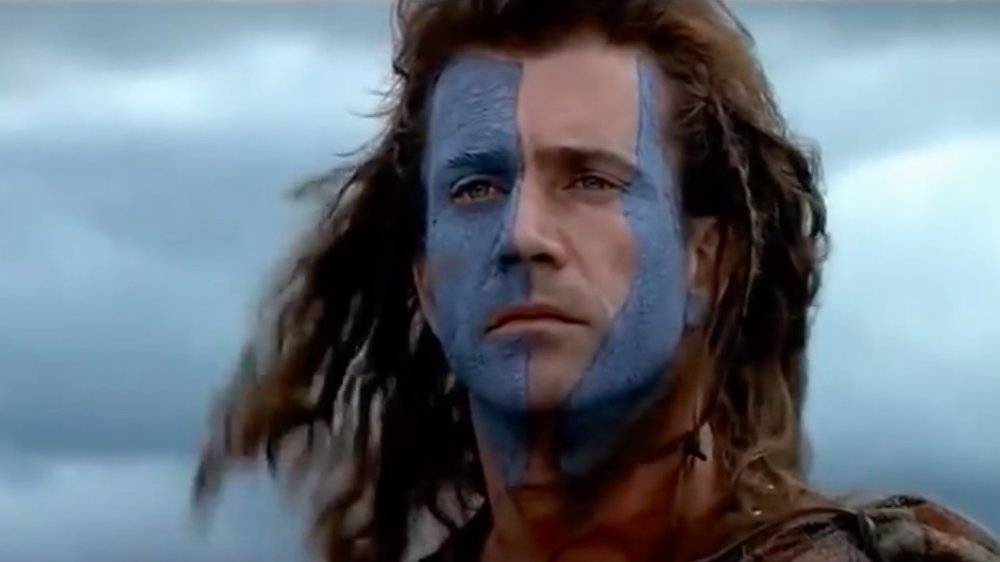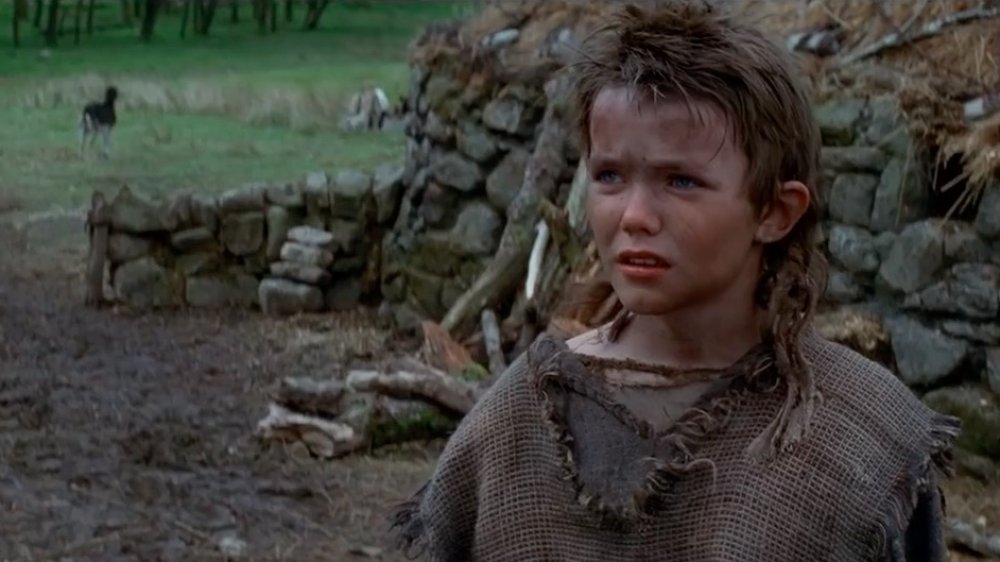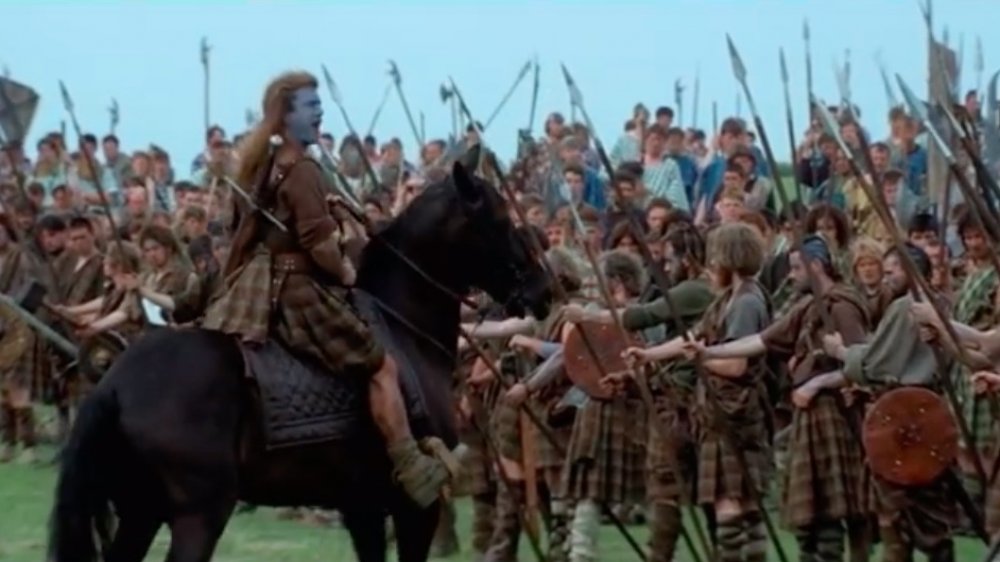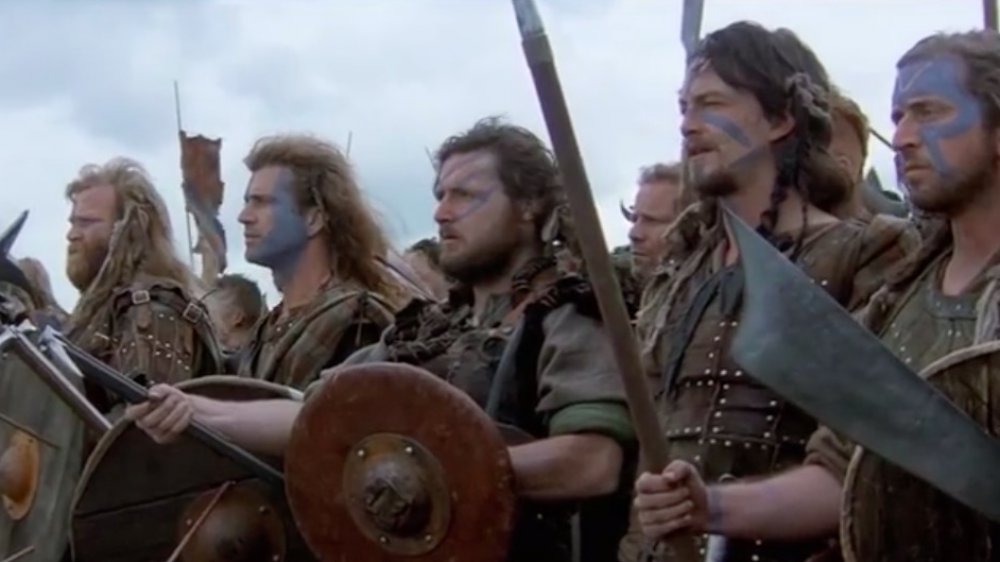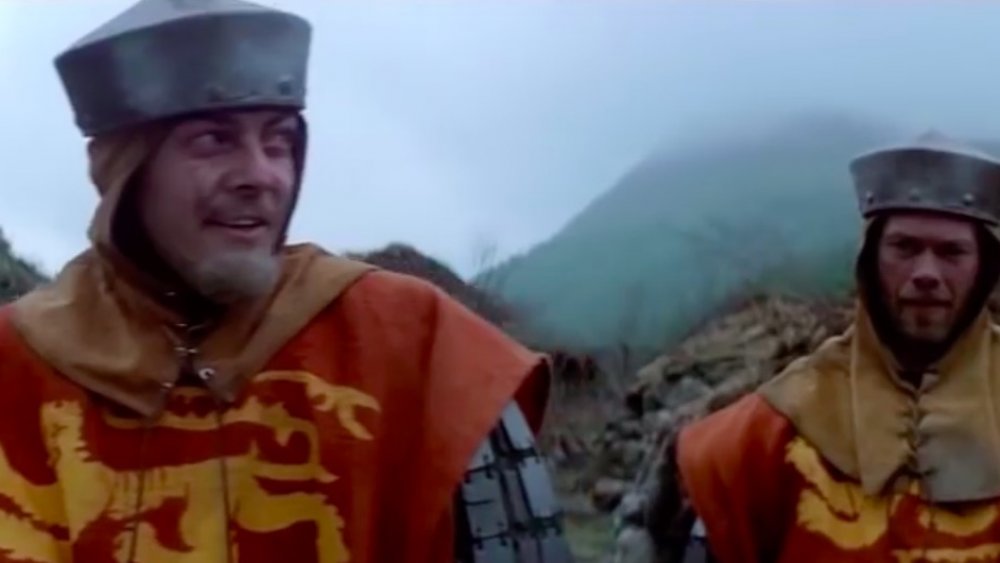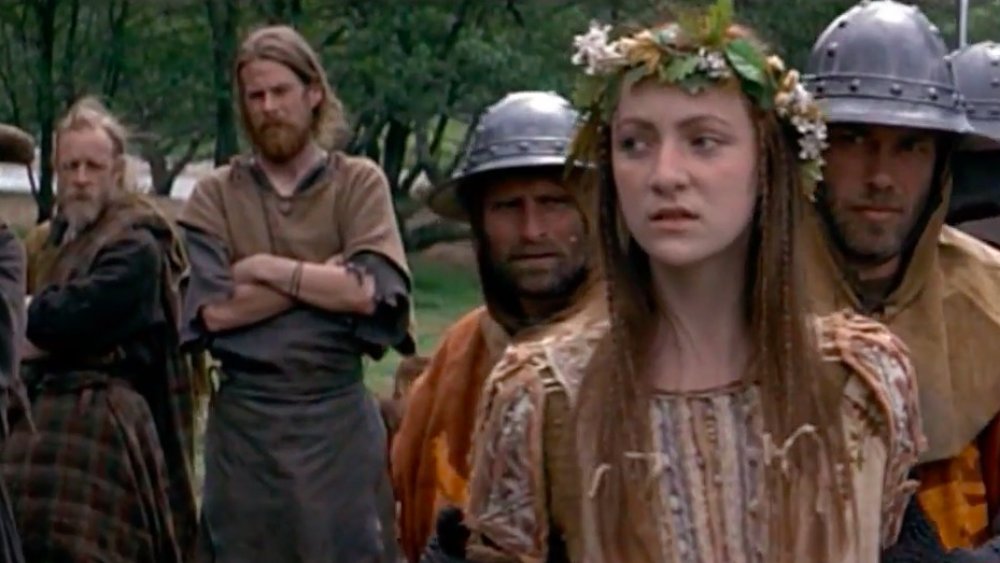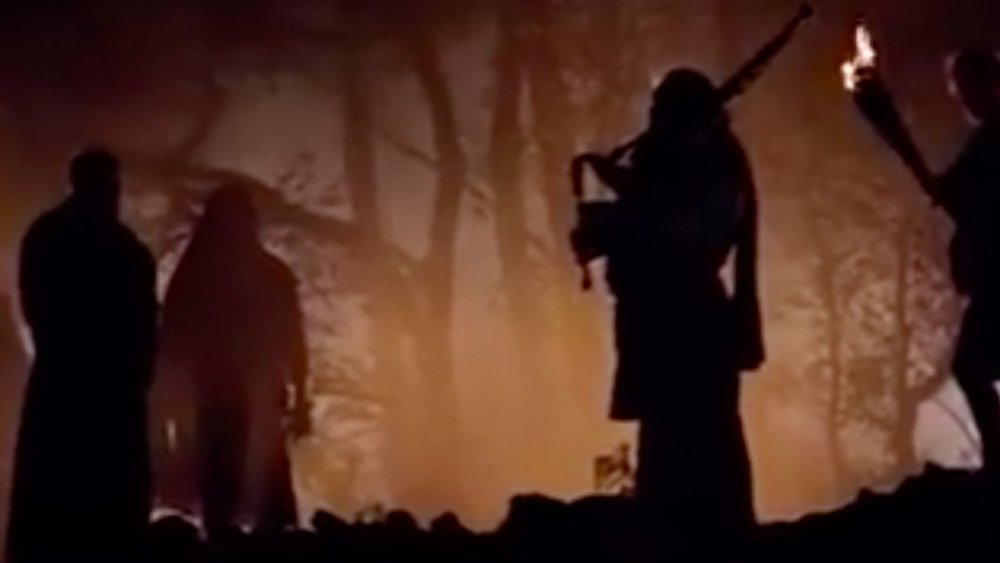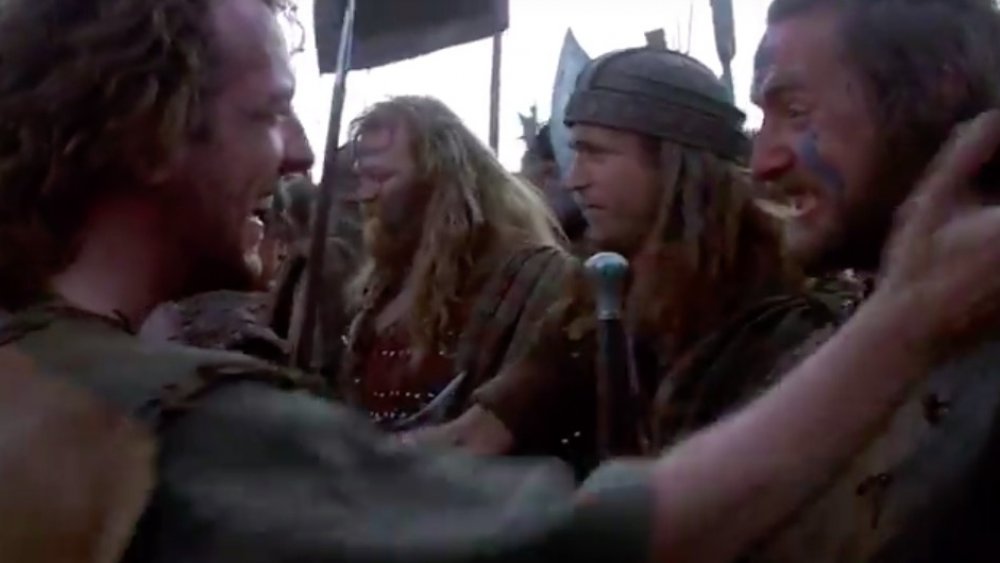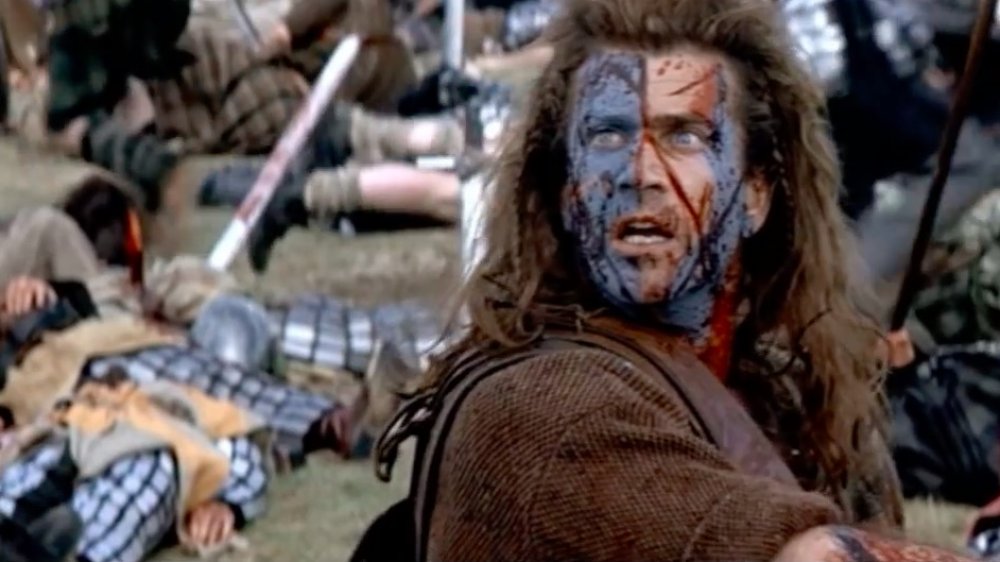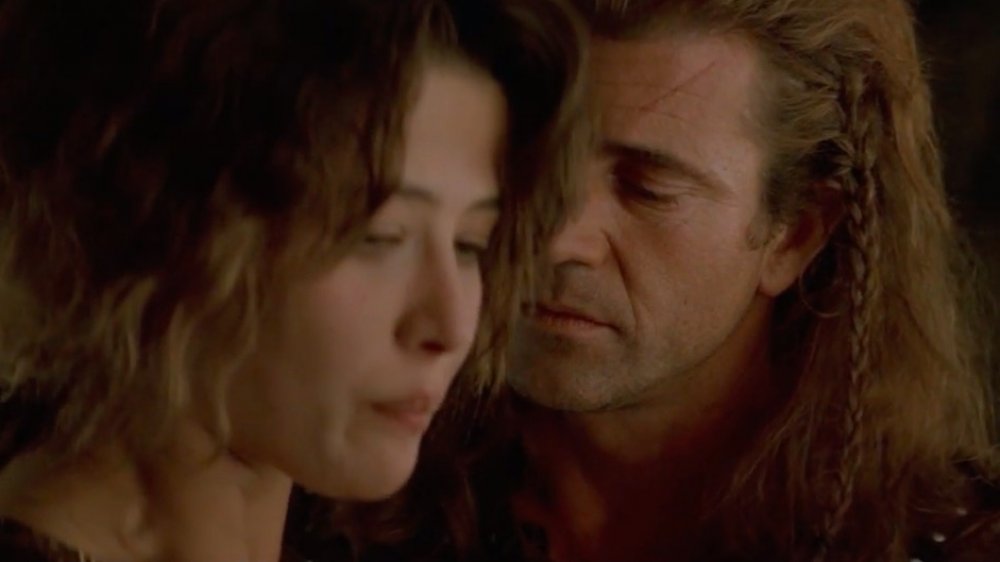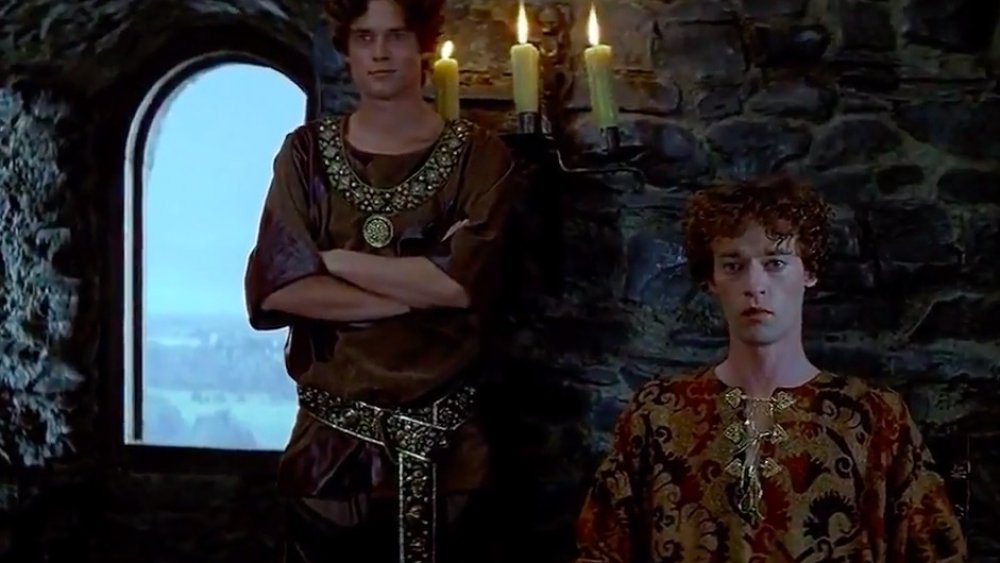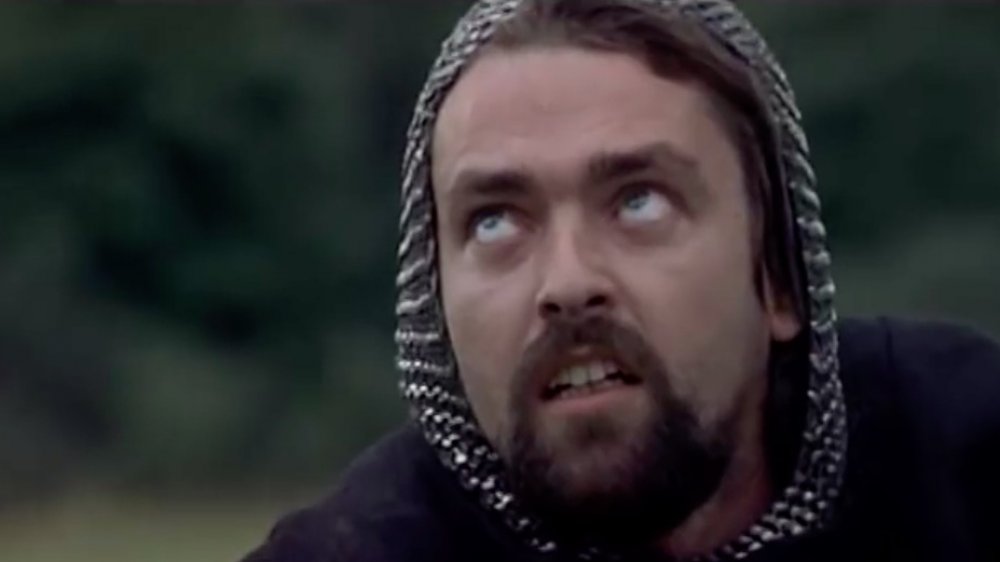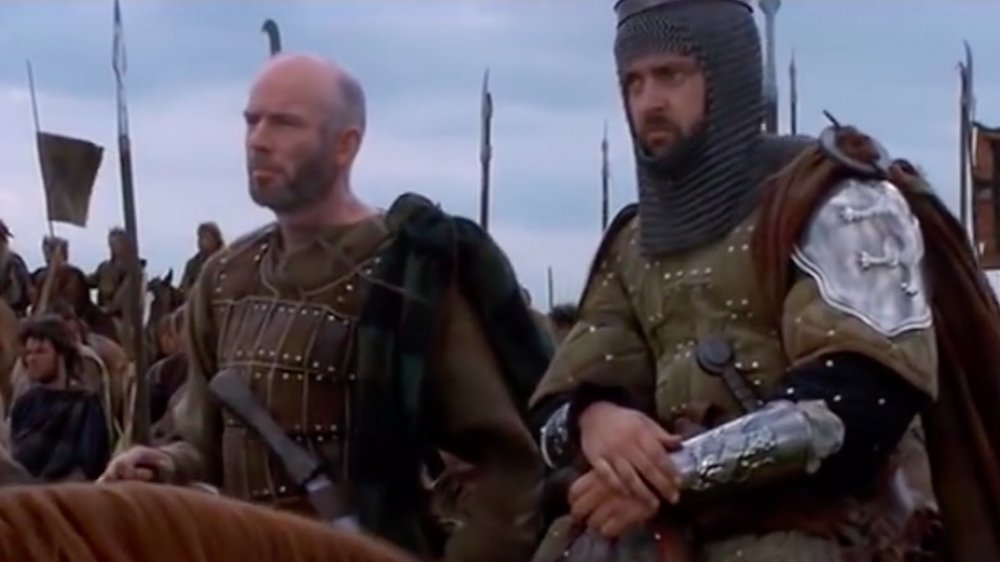Times Braveheart Lied To You
They may take our lives, but they'll never take our artistic license! Yeaaah!!
Everyone remembers that stirring speech; that dramatic, sweeping score; Mel Gibson, adorned in bright blue face paint, hair like an '80s rock star, riding across the front lines, stirring up patriotic fervor in his countrymen. Also just as a side note: was he wearing underpants under that kilt? Because it seems like it would kind of chaffing to sit on a hard leather saddle in a skirt with no underpants.
Anyway, the critics loved Braveheart; it got the Academy Award for Best Picture, Best Director, Best Cinematography, Best Sound Editing, and Best Makeup and Hair (seriously, just for the blue paint and a KISS hairdo?). How accurate is it, though? Because when we're watching a film based on real events and real people, you expect some artistic license, but for the most part, you want to come away feeling like you were entertained and also educated. Alas, you only got one of those two things with Braveheart, and it wasn't no education.
Here are some, but not all (!) of the many ways that Braveheart lied to you.
William Wallace was not born into poverty
Everyone loves an underdog story, so when you're writing historical fiction, you should make your totally not-an-underdog protagonist into an underdog, so your audience will root for him. That appears to be the school of thought writer Randall Wallace was working from when he decided to make William Wallace a poor kid from the wattle and daubs. But that was a lie, because Wallace was not born into poverty. His father was a Scottish knight and a minor landowner; so the family wasn't rolling around in silver coins or anything, but they weren't peasants, either.
William was the younger son of Alan Wallace (not Malcolm, as depicted in the movie — maybe "Alan" wasn't Scottish enough or something). Alan wasn't killed when Wallace was a boy, and neither was Wallace's brother John, who was actually executed about a year after his famous brother. Also, Wallace's uncle Argyle was totally made up for the movie. According to the BBC, Wallace did have an uncle who might have helped educate him, but he was a priest, so not really the sort who'd have taught his nephew the fine art of swordplay.
But you know, William Wallace's early years were mostly unrecorded, so if there was going to be a good place to insert some artistic license, it was definitely in those childhood scenes. But don't kid yourself that Wallace was an underdog — he wasn't.
Braveheart shouldn't have any kilts
What could be more Scottish than a kilt (besides a bagpipe)? That plaid skirt that can somehow make a Scottish guy look super manly. But despite being super manly and also Scottish, William Wallace never wore a kilt. Perhaps he didn't like the way he chaffed when he was sitting on that hard leather saddle.
Actually no, that's not the reason. William Wallace didn't wear a kilt because kilts literally had not been invented yet. According to Albanach, the kilt didn't start to show up in the historical record until the 16th century, 300 years after the events depicted in Braveheart. And evidently, the kilts that Wallace and his buds wear aren't even historically accurate to the 16th century, so the costumers were clearly not especially interested in getting the details right.
What would the medieval Scots have worn into battle? Bright yellow shirts dyed with — wait for it — horse urine. Yum.
Medieval Scottish warriors didn't paint their faces
The blue paint, though, that had to have been a thing, right? Because when they donned the blue paint, those Scottish warriors were transformed from a bunch of guys in historically inaccurate skirts to a badass band of warriors.
But no, the blue paint wasn't a thing either — at least not in 13th century Scotland. According to Albanach, this practice was from the 2nd century, more than a thousand years before the birth of William Wallace. The stuff was called "woad," and it was mentioned in Julius Caesar's 55 BCE description of the Britons, which might not have even been a firsthand account. But many modern scholars doubt that the Picts used woad at all, so not only is the whole blue face thing not something that would have been done during the time of William Wallace, it might not even be something that would have been done a thousand years before that.
So when you see Wallace galloping along the front lines with his face slathered in woad, well, that's pure fiction.
Soldiers shouldn't wear uniforms in Braveheart
One of the more forgivable mistakes in Braveheart is the attire of the English soldiers. They're seen as wearing matching uniforms, which is what we all understand about soldiering both in modern times and in the past. But military uniforms cost money, and they require an awful lot of time and resources to produce, and in the middle ages no one had a lot of time or resources. And when they did, they were mostly wasting them on lavish banquets and expensive clothes for the royal family.
According to Tor, there was no standard-issue uniform for a generic soldier in the 13th century. In fact soldiers just kind of had to just throw together whatever they could find with whatever means they had, and for a common foot soldier, that usually wasn't much. If they were lucky, they got hand-me-downs from the knights as new types of equipment came into fashion and the old stuff became obsolete. So soldiers would have a mishmash of different helmets, hauberks, or whatever else.
So all those neatly-matching soldiers in Braveheart are inaccurate, for sure, but their presence is forgivable because it certainly decreases audience confusion when you can identify the bad guys based on what they're wearing. So we'll overlook it. This time.
Primae noctis is fake
So imagine if, moments after saying "I do," some creepy old dude on a horse rides up and tells you he's got the right to take your new husband's place on your wedding night. You'd throw a glass of champagne in his face and have your bridesmaids throw him and his dumb horse to the curb. Well, back in the 13th century, the lord of whatever field you were farming could do exactly that, and no bridesmaid could say "boo" about it. Or could he?
References to the practice of primae noctis exist in the historical record, but not as individual incidents. According to Today I Found Out, people who love this idea often argue that there would be no reason to record singular incidents because peasant women were basically nobodies, and nobodies don't end up in the history books. But the lords who were supposedly engaged in this practice weren't nobodies, and there would have occasionally been some dire consequences, like pissed off peasant grooms and bastard children or court cases addressing the issue. So if it was something that regularly happened, there would have been at least a handful of instances that survived into the modern record.
There's not, though. References to primae noctis mostly exist in works of fiction, or in fictionalized works of history, and there isn't even a credible piece of evidence suggesting it might have been practiced anywhere, ever. So nope.
Bagpipes were not banned, though they totally should have been
During the first critical scenes of the film, the young Wallace and his ... artistically licensed ... uncle Argyle are observing some bagpipe players. Argyle tells Wallace that the men are "playing outlawed tunes on outlawed pipes."
According to Scotia Pipers, bagpipes were played at the Battle of Banockburn in 1314, but those bagpipes weren't like the ones used in Scotland today. Now granted, the bagpipes in that Braveheart scene are only seen in silhouette, but they do look an awful lot like modern bagpipes. The more inexcusable part of the scene is the "outlawed pipes" bit, though. Bagpipes eventually evolved to have an important place in warfare, inspiring troops on the battlefield. And they really were banned at one point, but not until 1745, roughly four and a half centuries after the events in the film. So really, that whole scene was just inserted into the movie to give us viewers a sense of moral outrage. How could the evil English possibly outlaw such a beautiful art form? Except, you know, it was bagpipes, and frankly they totally should have been outlawed. Just kidding! No hate mail, please.
The Irish never joined forces with the Scots at Falkirk
The Scots and the Irish were natural allies. They were both oppressed by the English. So naturally, when they were given the opportunity to face them at the Battle of Falkirk, they fought alongside each other. In the movie, we see King Edward's regiment of Irish foot soldiers advancing on the Scots, and then just as it looks like they're about to start slaughtering each other, the two groups meet in the field and shake hands and clap each other on the backs, to the dismay of the Edward and his army. Cute.
Didn't happen, though. According to the American Legion, there may have been Irish infantry at the battle of Falkirk, but they fought with the English; there was no switching of sides. In fact the closest anyone got to switching sides was the Welsh, who got drunk on wine that arrived on English supply ships and clashed with English soldiers. After King Edward had a bunch of Welsh rioters killed by his cavalrymen, they declared that they might go join the Scots. Which was cool with Edward, who evidently groused, "We shall defeat the whole lot of them in one go."
The presence of a bridge was pretty key to the Battle of Stirling Bridge
One of the most important battles of William Wallace's time was the Battle of Stirling Bridge, with the operative word being "bridge." During the real battle, the English forces had to cross the narrow bridge over the river Forth in pairs. The Scots hung out and watched them cross, and when about half of them were across the bridge they cut off their retreat and attacked them while they still had their backs to the river. A few knights managed to escape back across the bridge, and after that the English destroyed the bridge so the Scots wouldn't be able to follow them. A side effect of that was that half the English army got massacred on the other side of the river, but hey, that's the cost of war.
Evidently, Randall Wallace (the writer of Braveheart) thought this would have made for boring cinema, or maybe a river battle would have been more difficult to shoot. So in the film, the two armies charge each other on an open field instead. After much sword clashing and "arghs" and "urghs" and "ughs" and the occasional decapitation, Wallace lifts his sword into the air and declares victory with a "rawraah!" And everyone cheers.
Braveheart's romance is all fake
Another key part of the story was the romance between William Wallace and Isabella of France, who was married to King Edward's son and heir, the future Edward II of hot poker fame (which is, itself, probably not accurate). But the real Isabella of France never met William Wallace, and was also only ten years old when he was executed. Granted, she did marry Edward II when she was only 12, so in the middle ages being ten didn't exactly preclude you from becoming some horrible, horrible person's love interest. But apart from that, Isabella of France was a lot more than she was depicted in the film: according to historian Colin Falconer, by the time she was 30, she was tired of Edward and his not-very-kingly antics, so she raised an army, defeated her husband in a bloodless coup, and named herself Queen Regent. And none of that had anything to do with the Scots.
Incidentally, the whole "heir to the throne was actually the son of some other guy" trope is a favorite of historical fiction, where the princess defies all the medieval laws of modesty and becomes pregnant at great risk to herself by some not especially noble person, thus secretly breaking the royal bloodline (the History Channel's Vikings did the same thing when they implied that Alfred the Great was actually the son of a monk-turned-viking-turned-monk-again).
Everything about Prince Edward
Braveheart seems to take great delight in portraying Prince Edward as a gay stereotype. In fact, the film wastes no time in letting the audience know how gay he is, when they show him making eyes at his male confidant during his wedding to Isabella of France. Later in the film, we see King Edward throw said male confidant out a window to his death.
The real Edward II did have a close relationship with two men, Piers Gaveston and Hugh Despenser. Edward's buddy in Braveheart is called Philip, but he's clearly a facsimile of Piers Gaveston. Gaveston wasn't murdered by Edward I, though; in fact he outlived Edward by several years. When Edward II became king he made Gaveston the Earl of Cornwall and then got in trouble with his barons for making Gaveston the Earl of Cornwall. Gaveston did meet a violent end when he was executed by the Earl of Warwick in 1312, but he wasn't chucked out of a window: he was properly beheaded on Blacklow Hill.
Robert the Bruce sort of indirectly betrayed William Wallace
For William Wallace, the low point of the story is that moment where a helmeted Robert the Bruce knocks him off his horse and is revealed as a betrayer. Defeated, Wallace collapses in the grass and waits for the English soldiers to come for him, but then Robert has a change of heart and helps him escape.
Did this really happen? Nope. According to The Scotsman, Robert was inspired by stories of William Wallace and his (at first) successful campaign against the English. He went north to learn guerilla warfare from Wallace, but he wasn't the betrayer. The man who handed Wallace over to King Edward was John Menteith, the Scottish nobleman who held Dumbarton Castle for the English.
The idea that the Bruce betrayed Wallace does have some very, very small basis in fact, though. Two years after Wallace's death, the Bruce captured John Menteith and asked him to swear fealty or die. Menteith refused on the grounds that he already had a master and couldn't make the same promise to two different kings. So Robert the Bruce imprisoned him instead of killing him, and upon Edward's death, Menteith swore fealty to the Bruce. So in a way, Robert was guilty of betraying Wallace by not executing the man who had actually betrayed him.
Robert the Bruce was the real Braveheart
William Wallace had a brave heart, but he wasn't actually "Braveheart." That nickname belonged to Robert the Bruce.
According to Scotland Now, the Bruce got the nickname after his death in 1320. His dying wish was to join the Crusades, which obviously would have been difficult for him to do because, you know, dead — but undeterred, his friend James Douglas took his heart (his actual heart) into southern Spain. As his army faced the fearsome Moors, Douglas pitched Robert's heart into the midst of the battle and cried, "Forward, brave heart!"
So not only was the great and noble William Wallace not known as "Braveheart," Robert the Bruce had to die and have his heart ripped out, carried hundreds of miles, and thrown into a bloody battle in order to claim that title.
